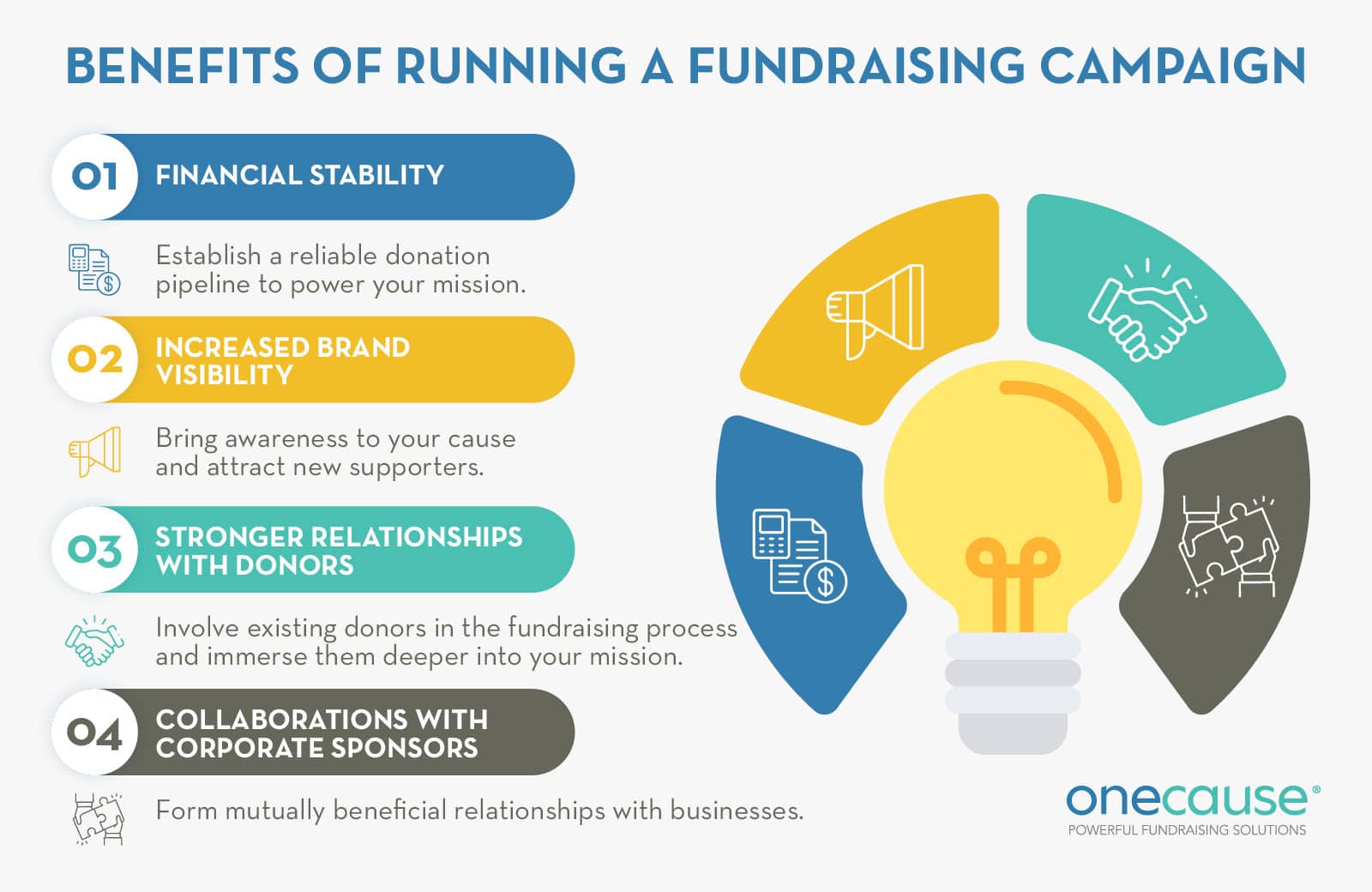Fundraising Consultant: Increase Your Nonprofit's Income with Specialist Help
Fundraising Consultant: Increase Your Nonprofit's Income with Specialist Help
Blog Article
Comprehending the Crucial Elements of Nonprofit Fundraising: Trick Practices for Enhancing Financial Sustainability
Nonprofit fundraising is a complex venture that calls for a nuanced understanding of a number of important parts to make sure financial sustainability. From critical planning that aligns with mission-driven objectives to the cultivation of purposeful donor relationships, each component plays a vital duty in the general success of fundraising efforts.
Strategic Fundraising Planning
Strategic fundraising planning is an important component for any not-for-profit organization aiming to attain its goal successfully. This process includes establishing clear, measurable objectives that align with the organization's total objectives while thinking about the unique requirements of the area it serves. A well-structured fundraising plan not just identifies prospective earnings sources however additionally outlines the strategies and methods necessary to engage those resources.

Moreover, leveraging data analytics can inform decision-making by giving understandings into donor actions and fads, enabling nonprofits to tailor their fundraising approaches appropriately. Regular testimonials and updates of the fundraising strategy are important to react to altering circumstances and arising chances. Ultimately, a thorough calculated fundraising plan functions as a roadmap for nonprofits, fostering economic stability and allowing them to satisfy their goal efficiently.
Structure Donor Relationships
Building solid benefactor connections is crucial for the long-lasting sustainability of any kind of not-for-profit organization. These connections are the structure upon which successful fundraising initiatives are built, as they cultivate trust, commitment, and engagement among advocates. Nonprofits have to prioritize cultivating significant links with their benefactors, recognizing that each interaction can substantially influence their willingness to contribute.
To efficiently develop contributor partnerships, companies should focus on individualized involvement approaches. This involves understanding the rate of interests, motivations, and providing patterns of private benefactors, making it possible for customized interaction that reverberates with them. Normal updates on business progress, program outcomes, and the impact of contributions reinforce the value of their support.
Additionally, sharing gratitude is essential. Acknowledging donations promptly and all the best not just improves connections however additionally urges continuous support. Events such as donor gratitude gatherings provide opportunities for individual links and area structure.
Inevitably, supporting contributor connections transcends transactional interactions; it personifies a collaboration where contributors feel valued and essential to the mission. By spending time and resources in relationship-building, nonprofits can enhance benefactor retention, boost lifetime offering, and make sure financial security for their efforts.
Effective Interaction Methods
Effective interaction methods play a critical duty in strengthening the strong contributor relationships that nonprofits make every effort to cultivate. Clear and consistent messaging is important for sharing the objective, vision, and influence of the company. Articulating the special value recommendation helps contributors understand exactly how their payments make a concrete distinction.
Utilizing numerous communication channels-- such as e-mails, social media, e-newsletters, and in-person events-- makes sure that messages get to a diverse target market - nonprofit agency. Customizing interaction to different contributor sectors can improve involvement; for instance, major benefactors may appreciate thorough reports on funding appropriations, while smaller sized benefactors may like succinct updates highlighting key accomplishments
Narration is another powerful tool in not-for-profit interaction. Sharing engaging narratives about beneficiaries can stimulate psychological responses and cultivate a much you can check here deeper connection with the cause. Transparency regarding financials and program end results constructs trust, encouraging contributors to stay involved with time.
Involving the Area
Community engagement is vital for nonprofits looking for to intensify their influence and cultivate a feeling of possession amongst neighborhood stakeholders. Developing a durable link with the area not just boosts presence yet additionally constructs trust, critical for sustainable fundraising efforts. By proactively entailing area participants in decision-making procedures, nonprofits can align their objectives with the requirements and goals of the population they serve.
To effectively engage the community, nonprofits need to focus on openness and open interaction. Holding public online forums, workshops, and informative sessions enables significant dialogue, where stakeholders can voice their opinions and add to the organization's vision. Additionally, collaborating with local organizations, colleges, and civic organizations can develop synergistic partnerships that utilize shared sources for greater impact.
An additional vital element of community involvement is acknowledging and celebrating neighborhood contributions. Recognizing volunteers, contributors, and supporters click for source promotes a sense of belonging and commitment, encouraging ongoing involvement. In addition, showcasing success stories and the substantial benefits of area support can motivate others to contribute.
Inevitably, proactive area engagement grows a network of advocates who are spent in the nonprofit's goal, guaranteeing long-term support and improved financial sustainability.
Using Modern Technology and Tools

One necessary device for nonprofits is a thorough benefactor monitoring system. These systems allow companies to preserve comprehensive records of donor communications, payments, and choices, promoting tailored interaction and interaction (nonprofit agency). Moreover, using online fundraising systems permits nonprofits to reach a broader target market, making it less complicated for advocates to contribute via numerous networks, consisting of social media and e-mail projects
Furthermore, making use of task administration tools can help simplify interior processes, making certain that fundraising teams remain arranged and focused on their objectives. Automation software application can also streamline repeated tasks, such as sending out thank-you emails or pointers, liberating team time for even more calculated initiatives.
Verdict
In final thought, the important elements of nonprofit fundraising include tactical preparation, strong contributor relationships, efficient communication, community engagement, and the usage of modern technology. These components jointly add to enhancing economic sustainability and durability within not-for-profit organizations.
Furthermore, leveraging information analytics can educate decision-making by supplying insights into contributor habits and trends, permitting nonprofits to tailor their fundraising approaches accordingly.Structure solid benefactor connections is essential for the long-lasting sustainability of any not-for-profit organization.Effective interaction methods play a critical duty in strengthening the strong benefactor partnerships that nonprofits strive to grow.One important tool for nonprofits is an extensive contributor monitoring system.In conclusion, the vital parts of not-for-profit fundraising include tactical preparation, Full Article strong contributor partnerships, reliable communication, community interaction, and the application of technology.
Report this page